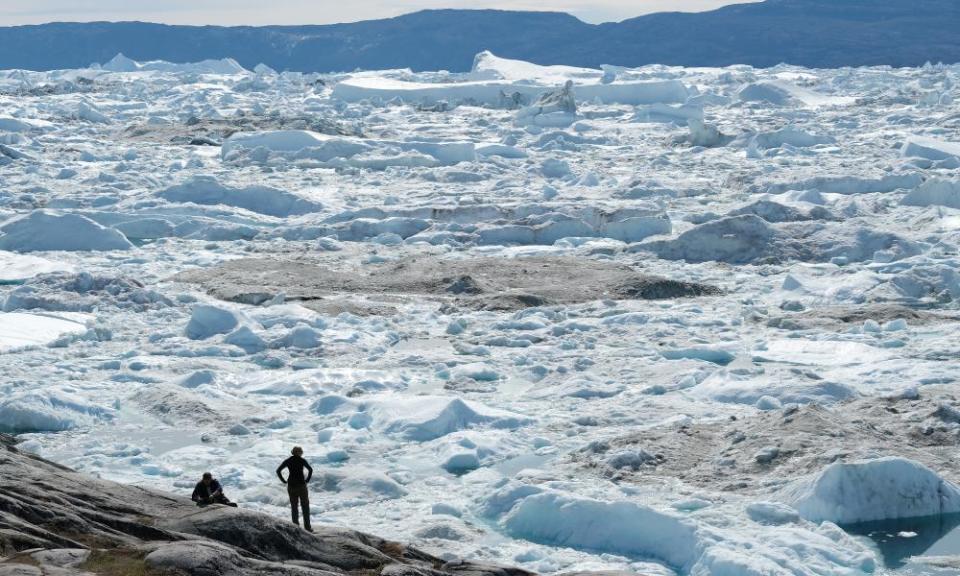Greenland's ice melting faster than at any time in past 12,000 years

Greenland’s ice is starting to melt faster than at any time in the past 12,000 years, research has shown, which will raise sea levels and could have a marked impact on ocean currents.
New measurements show the rate of melting matches any in the geological record for the Holocene period – defined as the period since the last ice age – and is likely to accelerate, according to a paper published in the journal Nature.
The increased loss of ice is likely to lead to sea level rises of between 2cm and 10cm by the end of the century from Greenland alone, according to the study.
Jason Briner, a professor of geology at the University of Buffalo and lead author of the paper, said: “We have altered our planet so much that the rates of ice sheet melt this century are on pace to be greater than anything we have seen under natural variability of the ice sheet over the past 12,000 years.”
These changes, over the relatively short period of less than a century, appear to be unprecedented. Greenland’s ice sheet shrank between 10,000 and 7,000 years ago, and has been slowly cumulating over the past 4,000 years. The current melting will reverse that pattern and within the next 1,000 years, if global heating continues, the vast ice sheet is likely to vanish altogether.
If greenhouse gas emissions continue to rise strongly, the rate of melting could accelerate further to be four times greater than anything found in the past 12,000 years.
“We are increasingly certain that we are about to experience unprecedented rates of ice loss from Greenland, unless greenhouse gas emissions are substantially reduced,” wrote Andy Aschwanden, of the Geophysical Institute at the University of Alaska Fairbanks, in a commentary accompanying the study.
The findings underline the extent of the changes that human actions are wreaking on the planet. Last week, a separate team of scientists found that melting of the Antarctic ice cap would continue even if the world met the Paris agreement goal of holding temperature rises to no more than 2C, and would eventually raise sea levels by 2.5 metres at that level of heating.
Although the Antarctic ice cap, like the Greenland ice sheet, will take centuries to melt, the study found the melting trend that had been set in motion through human changes to the climate was likely to be extremely difficult, if not impossible, to reverse.
Arctic sea ice is also melting at a fast pace. This year’s summer sea ice minimum was the second lowest in the last 40 years of continuous measurements. Unlike Greenland’s ice sheet, which sits on land, the Arctic ice cap floats and so its melting will not produce much impact on sea levels.
However, its melting hastens warming further by reducing the earth’s albedo – the reflection of light back into space from the ice – and exposes the darker water underneath, which absorbs more heat.
The findings also follow a study last month that found last year’s melting in Greenland was likely to have been the worst for centuries.
The team behind the latest Greenland study made their estimates by producing a computer model of a section of the south-western region of the ice sheet over the past 12,000 years and then projecting forward to the end of this century.
They checked their findings against what we can tell actually occurred with the ice, through satellite measurements and other instruments, and also by mapping the position of boulders containing beryllium-10.
These are deposited by glaciers as they move, and measurements of beryllium-10 can reveal how long the boulders have been in position, and therefore where the edge of the ice sheet was when the boulder was deposited.
“Before our study, science did not have a great handle on the long-term trends of the rate of Greenland ice loss,” Briner said.
“Very meticulous work has been done to quantify today’s rates of ice mass loss on Greenland, but we did not have a long term view to put today’s rates into perspective. Our study provides that perspective.”

 Yahoo News
Yahoo News 